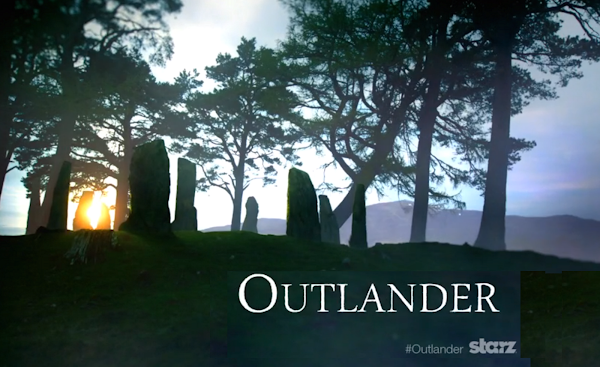Re-reading BEES (Part 7)

Here's Part 7 of my series of posts about things I've discovered on re-listening to Diana Gabaldon's GO TELL THE BEES THAT I AM GONE, Book 9 in the OUTLANDER series. (The other posts in this series are here.)
*** SPOILER WARNING!! ***
If you haven't read GO TELL THE BEES THAT I AM GONE, there are SPOILERS below! Read at your own risk!
The small subplot starting in BEES chapter 68, explaining how Fergus came into possession of some contraband guns, is BY FAR the most confusing part of the whole book, in my opinion. Even after multiple re-reads, I find it really hard to follow, and I think that's because some key information is based on conversations that happen "off page". It's almost as though Fergus and Roger are talking in a sort of shorthand in some places, because they know things that the readers don't, which are not explained until later.
It's hard enough to follow what IS on page in this situation, IMHO, without having to account for important information being shared in off-page conversations! That's adding to my confusion as I try to make sense of this subplot. I feel almost as though I need a cheat sheet, or a flowchart or something. (I'm not entirely kidding! It would probably help me and others.)
I can't recall offhand another occasion in the whole series where I've had this much difficulty just wrapping my brain around what the characters are talking about. I have tried, a number of times since the book came out, and it's very frustrating!
So I decided this morning that I would make one more attempt to figure it out. What follows is my best attempt at what I believe to be a logical sequence of events for this storyline involving Fergus, Roger, Monsieur Faucette, and the guns, with only one minor place in chapter 73 (noted below) where I am still a bit confused. Hope you find it helpful! Let me know what you think.
BEES CHAPTER 68, "Metanoia"
We begin with Fergus and Roger at the printshop in Charles Town.
“Come,” Fergus said, with a jerk of his head toward the distant water. “I may possibly have found milord’s guns. Bring a small amount of gold.”Roger takes three slips of gold from their cache at the printshop and leaves with Fergus. They go to the quay, which is a busy place, with many boats and people everywhere. They are looking for a man named Faucette. With the aid of a black fisherman, Fergus and Roger locate Faucette's boat.
(From GO TELL THE BEES THAT I AM GONE by Diana Gabaldon, chapter 68, "Metanoia". Copyright © 2021 by Diana Gabaldon. All rights reserved.)
Shakes of the head greeted Fergus’s questions, for the most part, but one squat black gentleman, nearly as broad as he was tall, paused in the act of gutting a fish--still alive and flapping--and replied in the affirmative, judging from his gestures, which ended in his pointing out to sea with his bloody knife.I think this unnamed black man (call him A) is probably the French-speaking "shark fisherman from Martinique" whom Fergus mentions later, in Chapter 72:
(From GO TELL THE BEES THAT I AM GONE by Diana Gabaldon, chapter 68, "Metanoia". Copyright © 2021 by Diana Gabaldon. All rights reserved.)
“I knew a shark fisherman from Martinique. He was caught up in a bad storm and his boat damaged; one of the merchantmen picked him up and they brought him here.”I honestly never made that connection before this latest re-read.
(From GO TELL THE BEES THAT I AM GONE by Diana Gabaldon, chapter 72, "A Prayer to St. Dismas". Copyright © 2021 by Diana Gabaldon. All rights reserved.)
Faucette's boat is carrying what turns out to be a dead hammerhead shark. Owing to the commotion surrounding the shark, Fergus tells Roger it will take some time to talk to Faucette. Roger should go about his business and they'll meet up later. Roger gives Fergus the three gold slips and they part, wishing each other good luck.
MEANWHILE... ("OFF PAGE")
The next part of the scenario fits chronologically here, but we don't actually see any of it ourselves. In other words, these events occur "off page", after Roger leaves Fergus on the quay. We don't learn any of this until Chapter 73 when Roger tells Bree about it. But I think it's much easier to understand what's going on if we mention it here.
1) Fergus talks to Faucette, and with the assistance of the gold Roger gave him, manages to get Faucette to agree to give them about two dozen guns.
2) Faucette arranges a meeting between Fergus and the owner of a small trading vessel, who actually has the guns. So there's a third party involved here. Call him B.
CHAPTER 72, "A Prayer to St. Dismas"
Later that afternoon, Roger returns to the wharf, where he encounters Fergus.
Fergus says he managed to talk to Faucette alone, and he learned something interesting about him:
“Have you heard of the island of Saint Eustatius?”St. Eustatius (now known as Sint Eustatius) is an island in the Caribbean that was a major center of trade in the 18th century. According to Wikipedia:
“Vaguely. It’s out there somewhere.” He waved an arm in the general direction of what he thought was the West Indies.
“Oui,” Fergus said patiently. “It belongs to the Dutch. And the Dutch make and sell arms--on Saint Eustatius. Monsieur Faucette was born on the island and calls there regularly. His mother is a Dutchwoman and he has family there still.”
(From GO TELL THE BEES THAT I AM GONE by Diana Gabaldon, chapter 72, "A Prayer to St. Dismas". Copyright © 2021 by Diana Gabaldon. All rights reserved.)
In the 18th century, St. Eustatius's geographical placement in the middle of Danish (Virgin Islands), British (Jamaica, St. Kitts, Barbados, Antigua), French (St. Domingue, Ste. Lucie, Martinique, Guadeloupe) and Spanish (Cuba, Santo Domingo, Puerto Rico) territories—along with its large harborage, neutrality and status from 1756 as a free port with no customs duties—were all factors in it becoming a major point of transhipment of captured Africans, goods, and a locus for trade in contraband.This man Faucette has connections to St. Eustatius, which means he's well placed as a smuggler.
Roger asks if Fergus knew Faucette, and Fergus says no. Then Fergus abruptly changes the subject. He tells Roger about a French-speaking fisherman he met a week before. This man (probably the black man I called A in chapter 71, who pointed the way to Faucette's boat) told Fergus that the French fleet is coming this way.
This really confused me on prior readings, but it's starting to make sense to me now. It's not a complete non-sequitur, as I thought at first. Fergus had not met Faucette himself until now, but apparently this shark fisherman from Martinique knew him, at least to the point of being able to identify Faucette's boat. And although Fergus doesn't say so, thinking of the man from Martinique evidently reminded him of the urgent news about the French navy that he must convey to Roger immediately. (That may not be precisely what Diana Gabaldon intended, but it makes sense to me.)
Fergus and Roger discuss the upcoming attacks on Charles Town and Savannah. Roger tells him about "what Claire is" (i.e., a time-traveler), and confirms that he and Bree and their kids have the same abilities.
During their conversation, Fergus sits down on a crate marked GUANO. That looks like a casual gesture, but it's not, as Roger is surprised to learn at the end of the chapter:
“Then let’s have a pint of something and you can tell me where the guns are.”In other words, the smuggled guns are hidden in those crates. But we still have no idea, based on what's been revealed in the text so far, how Fergus managed to acquire them. That's confusing, in my opinion.
“You’re sitting on them. But by all means, let’s have a drink.”
(From GO TELL THE BEES THAT I AM GONE by Diana Gabaldon, chapter 72, "A Prayer to St. Dismas". Copyright © 2021 by Diana Gabaldon. All rights reserved.)
CHAPTER 73, "Stand By Me"
Later, at the printshop, Roger tells Bree about the guns. It turns out that the same Mr. Brumby whose wife's portrait Bree will be painting when they get to Savannah is also a smuggler of guns, according to Monsieur Faucette.
Bree asks Roger, “So you’re saying the guns you and Fergus just acquired came from Saint Eustatius?”
How does she know that? Roger didn't mention Saint Eustatius until a bit later in the conversation. (It's a minor point, possibly something that should have been caught in editing, but it just adds to my sense of confusion.)
Roger explains, finally, how Fergus came into possession of the guns:
"And as it happened, I’d given Fergus sufficient gold that he was in a position to grease Monsieur Faucette, who ... er ... facilitated a meeting between Fergus and the owner of a small trading vessel, who had just brought the guns to Charles Town from Saint Eustatius via Jamaica."So this other man, whom I called B, arranged for Fergus to take possession of the guns, hidden in crates labeled GUANO. I wonder if this mysterious B might be Mr. Brumby, the man Bree and Roger will be meeting in Savannah? He knows Faucette, and he's involved in smuggling in the area of Charles Town, so it makes sense that he could have "facilitated" this arrangement. But I don't know for sure.
(From GO TELL THE BEES THAT I AM GONE by Diana Gabaldon, chapter 73, "Stand By Me". Copyright © 2021 by Diana Gabaldon. All rights reserved.)
SUMMARY:
1) Fergus heard that a man named Faucette might be able to supply guns. Fergus's French-speaking acquaintance (A) on the wharf pointed out the location of Faucette's ship.
2) Roger's gold helped Fergus make a deal with Faucette for the guns, while Roger was otherwise occupied with the Presbyterians.
3) Faucette arranged for a smuggler (B) to hand the guns over to Fergus, concealed in crates labeled GUANO.
And in the course of all this, Roger filled Fergus in on what's going to happen in Savannah and Charles Town in the coming months.
OK. I think I get it now, more or less. But you really have to pay VERY close attention to keep this all straight!
What do you think of this part of the book? Do you agree that it's confusing? Does my interpretation make sense to you, or is there anything you'd like to add to it?
Look here for the other posts in this series. I'll post more of my thoughts on re-reading BEES in the coming weeks. Stay tuned!








Comments